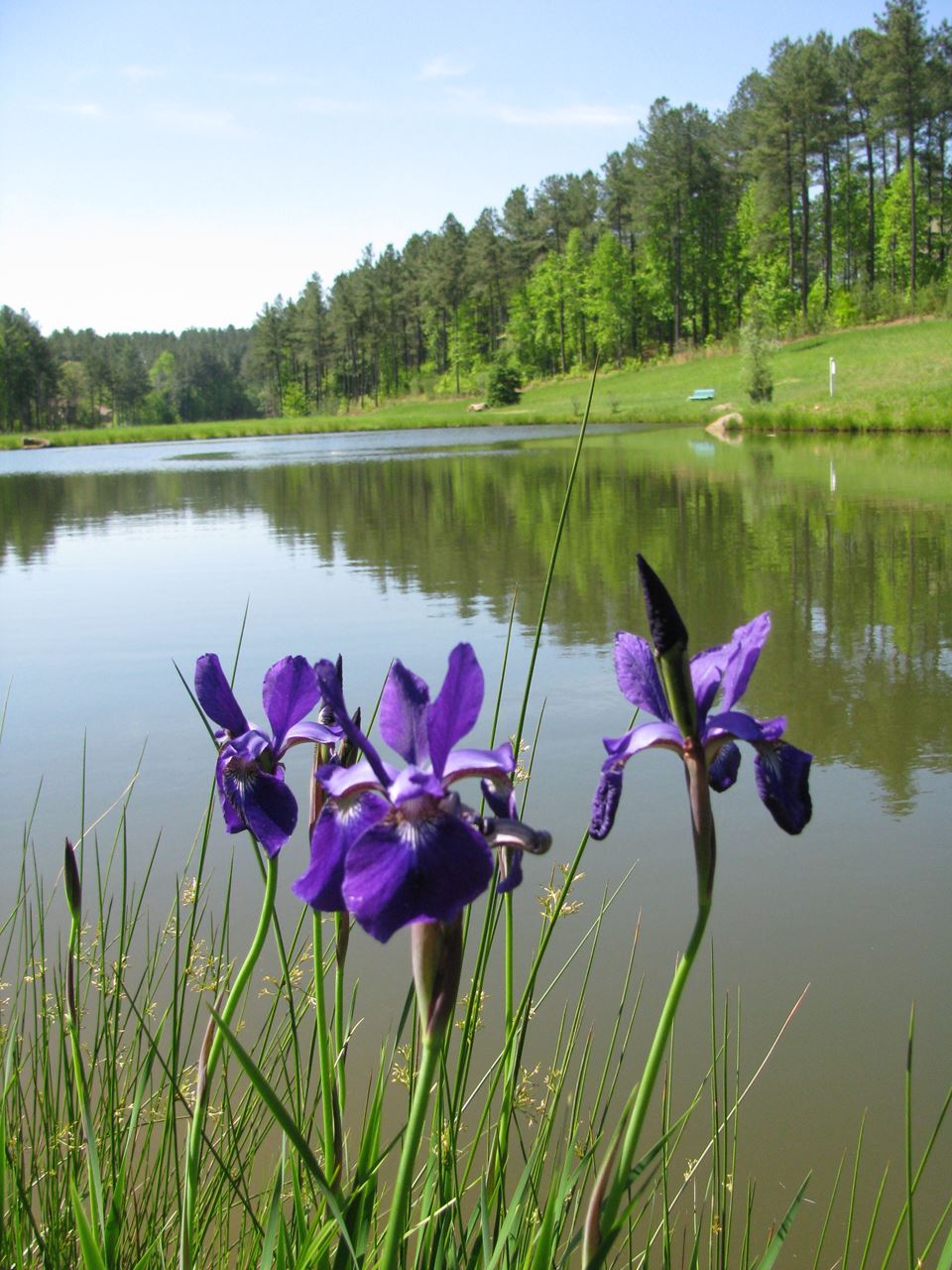 Gone are the days when property owners expect a lake, pond or stormwater device to have absolutely no plants. Aquatic plants can be very beneficial environmentally. They remove excess nutrients from the water, provide habitat for all kinds of aquatic organisms and can actually look very attractive. For the purpose of this article I will limit my comments to emergent aquatic plants that are attractive and native to North Carolina. Submersed plants and floating plants are often more difficult for the property owner to manage and may not be attractive.
Gone are the days when property owners expect a lake, pond or stormwater device to have absolutely no plants. Aquatic plants can be very beneficial environmentally. They remove excess nutrients from the water, provide habitat for all kinds of aquatic organisms and can actually look very attractive. For the purpose of this article I will limit my comments to emergent aquatic plants that are attractive and native to North Carolina. Submersed plants and floating plants are often more difficult for the property owner to manage and may not be attractive.
There are many shrubs, trees and ground covers that are suitable for planting in very wet shoreline situations. They also provide all the benefits. However, this list includes plants that are easy to obtain from nurseries, have a reasonable chance of surviving when planted and are relatively diverse. You should expect to have reasonable success planting these plants.
1. Blue Flag Iris: These are very attractive plants that are resistant to being eaten by muskrats, waterfowl and other animals. They form dense clumps of rhizomes (enlarged underground roots) that can be separated and spread out over time. They grow to about 3 feet high and rarely grow in water deeper than about a foot. Therefore, they rarely interfere with recreation, but provide effective shoreline erosion protection.
2. Pickerel Weed: This plant is also attractive, hardy and grows rhizomes that can be split and propagated. They grow three to four feet tall and can grow in water up to about 2 feet deep. The large spikes of clusters of violet-blue flowers are very ornamental. They also attract bees and butterflies.
3. Duck Potato: This versatile rapidly reproducing plant can grow in water 6 – 12 inches deep. It’s rhizomes, seeds and foliage can be good wildlife food. When established the dense clumps of plants reduce shoreline erosion, provide cover for aquatic animals and remove large quantities of nutrients from the water and shoreline soil. The plants can grow to 4 feet tall.
4. Lizard Tail: Grows in small colonies through underground runners. The white flowers look like drooping bottle brushes 4 - 6 inches long. The plants typically grow 1 to 3 feet tall and do well in partial shade. Maximum water depth for growth is about 18 inches.
5. Water Willow: Will grow up to 3 feet tall in water up to about 4 feet deep. The plants don’t grow as dense as most of the others, but provide excellent fish habitat. The leaves look much like weeping willow leaves. The small but attractive white or pale lavender flowers bloom from May through October. Although it is very effective for protecting shorelines the plants may grow out further from shore than many property owners prefer.
6. Native sedges and rushes: There are many grass-like aquatic sedges and rushes native to North Carolina. Some examples are bulrushes, soft rushes and White-top sedge. Sedges grow in shallow water and usually have triangular stems. Rushes often grow in clumps and usually have cylindrical stems. Their shallow spreading surface roots hold shoreline soil and reduce erosion. White-top sedge is a showy 2 foot tall spreading sedge bearing attractive white flowers throughout the summer.
These plants can be expected to spread, but are not aggressive. You can dig up plants, separate tubers and spread them where you want them. If they are expanding past where you want them, they can be controlled by hand pulling or using approved aquatic herbicides on the plants that are not where you want them. You will find that they only need controlling once per year or less. You will also probably find that these plants will reduce problems with more invasive and aggressive aquatic plants. Your shoreline will look more natural and attractive, too.
Foster Lake & Pond Management provides the full range of lake, pond and stormwater management services and products. These include: construction, repairs, maintenance, certified inspections, fish stocking, fisheries management, lake mapping, vegetation management, docks, fountains and aeration.
We have provided aquatic and stormwater solutions to our North Carolina customers for over 38 years. Call us at: 919-772-8548 or visit: www.FosterLake.com.